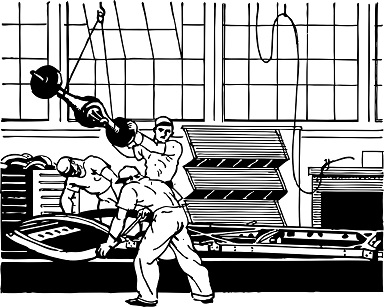The hype around IoT is refusing to calm down. Should it? Is it just a fad? Or should you seriously consider IoT for your business? And if yes, says entrepreneur and member of The Intellectus community, Abhinav Dubey, how should you go about incorporating the Internet of Things (IoT) in your business strategy?
In this piece, I will try to lay a simple but powerful pathway to get started with IoT for your business answering the questions that we started with. This is intended mainly for business owners who are responsible to keep their organisations future ready.
IoT is here to stay for perpetuity and for good. It is going to massively impact businesses just as Henry Ford’s assembly line did for car manufacturers which then quickly became a norm in many other manufacturing businesses; now assembly lines are like the lifeblood firmly rooted to manufacturing DNA. IoT will go one step further, not only will it transform businesses but also the daily lives of the masses.
Euromonitor International conducted an Industry Insights Survey regarding likelihood to tech investments in the near future and the results are not surprising – the cloud and Internet of Things (IoT) are the top 2 areas for planned investments in the next 5 years. In the same survey, majority of respondents ranked IoT’s impact ahead of both cloud and artificial intelligence. I couldn’t’ agree more.
The data generated by IoT devices (sensors) will serve as the foundation ready for consumption by other technologies, but naturally, they will have to work in unison to generate the business value. Sooner or later, willingly or unwillingly, you will have to embrace IoT. It is not just me, the industry feels that way. The market forces will force you to adopt IoT. So, do it before your competitor does. Let us see how?
It should all start with a business case and that case must come from you because you know best about your business, its problems, your competitors and the market forces in play. Many people get confused with the term business case with use case. Both address a problem and a solution.
You can come up with numerous use cases leading to varying results, but a business case has one and only one meaning – a path to profitability. Your IoT business case should clearly show you a path to making more money. Somebody somewhere must make money, otherwise you cannot sustain this initiative. So how do you make more money?
There are only two proven ways to do that:
- You save on your costs. Spend less and save more is the mantra since time immemorial
- Sell more. Whichever mix you choose – high volume + low margin or low volume + high margin, you must sell more to make more money.

IoT will enable you to achieve both the above or a combination thereof if you make the right moves with your IoT strategy. Follow below two steps to come up with a financially viable business case. Financially viable is important because you need to realise the ROI without which you cannot sustain the IoT initiatives. A recent executive survey by Cisco reveals that three-fourths of IoT projects fail. A simple trick to increase the chances of success of your IoT initiative is to ensure its viability from the very beginning.
Immediate and short-term business case – go for the low hanging fruits
Do the following in the order specified:
- Identify all the operational challenges that your business is facing today. For example, you are forced to maintain a large inventory to balance the uncertainties of retail sales or you have pilferage in your distribution network. Or your customer retention is far from your target. It could be any issue, big or small that your business is facing as of today.
- Identify the financial advantage you could have against each of these issues thinking you could solve it somehow. Bring it down to numbers for each of the issue. This could be saving on expenses or increase in sales. Categorise and keep the ballpark financial numbers ready.
- Check if IoT can help you in addressing the identified issues. I would advise you to consult an IoT expert who can visualise the whole spectrum of IoT stack to solve your issue, but give it a first shot yourself.
- Identify the easiest issue to attack using IoT. This is important so that you do not end up spending a lot before you can see the benefits of IoT. Take baby steps and prove your point. This is essentially a cost and timeline decision to implement IoT for this issue.
- Go ahead and experiment with IoT for this issue and learn along the process.
- Repeat the above steps for other issues.
Strategic and long-term business case – use IoT thinking
This section of my article is critical for all the corporate strategic thinkers out there. Take a pause. Imagine every aspect of your business with connected things (sensors) at every major touch point across all the departments – marketing, operations, support, development, plant floor etc. and visualise the new data you get if you could have sensors constantly streaming data from these touch points to your cloud.
Ask yourself this important question – What would you have done differently in your business if you had such rich data at hand with more profitability as the goal? This is The New Age IoT Thinking. It’s a new world order and you must view the business in this light to make long term strategic decisions.
Once you have an answer to the above question, you can lay a strategic roadmap of IoT initiative for your business, but don’t forget the thumb rule – the initiative should align with your goal of profitability i.e. a tangible financial result, that is a must to sustain IoT investment. For example, IoT enables you to deliver goods faster via more efficient operations which then helps you capture more market share. Or you price your products more aggressively because you are saving more which again helps you capture more market share.
Here is the icing on the cake, if you get this right, you not only get more profitable but also earn more brand equity. Imagine your organisation as the market leader in digital transformation setting standards for your competitors. Imagine featuring in the top 100 list of companies which are future ready as regularly surveyed by reputed publications such as Forbes or Gartner. Wouldn’t that be a great feat to achieve?
Follow these steps and let me know how it goes. Final word of caution – If you can’t find a business case, don’t do IoT just for the sake of it. Be wise and identify the business case first.
About the author
The author of this blog is Abhinav Dubey. Abhinav Dubey is an entrepreneur, a strategist and a technologist at heart. With over 10 years of industry experience at the likes of Honeywell and AMD, he has ventured into the start-up world at Breadware with IoT at the centre stage and is thoroughly enjoying it. Abhinav holds an MBA from University of Oxford, U.K, and MS from Christ University, Bangalore. His mantra – have fun and be fun.
This article is presented by Intellectus, an invite-only thought-leadership community for experts. Want to join? Check your eligibility.
Comment on this article below or via Twitter: @IoTNow_OR @jcIoTnow










